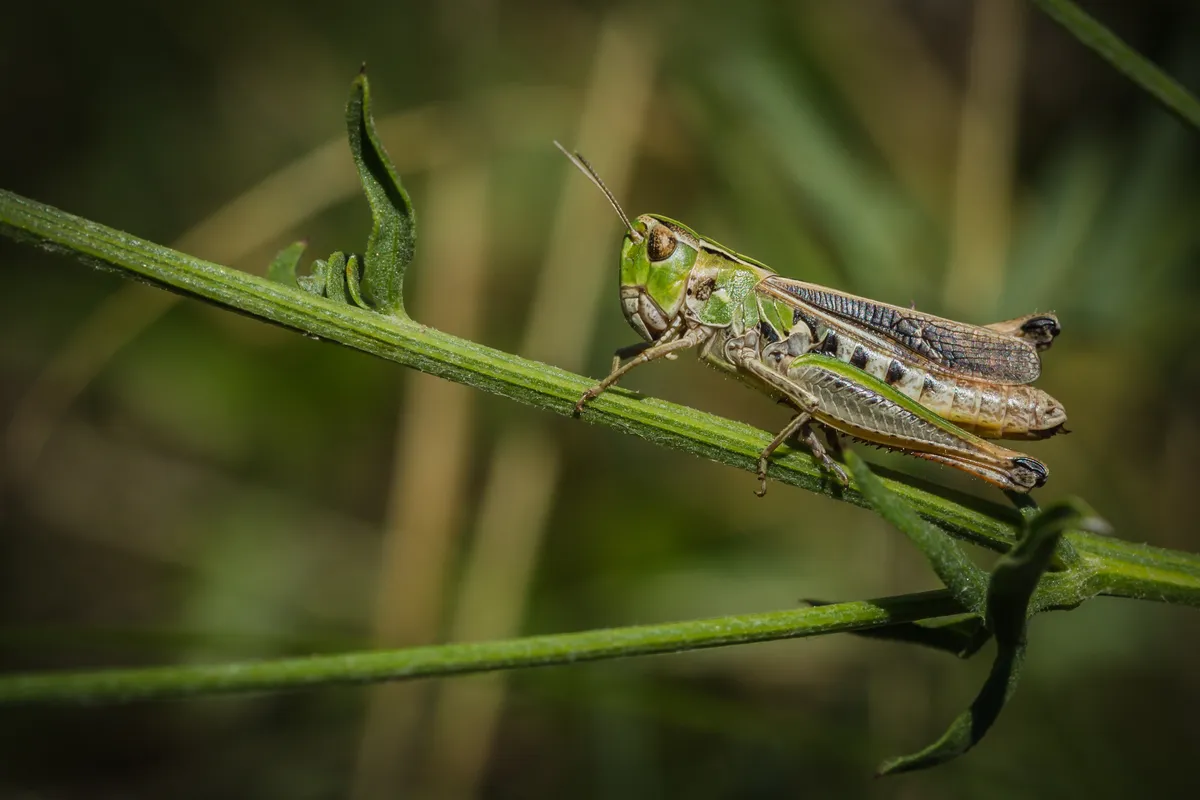Come summer, the countryside sings with the chirps and chirrups of slender, long-legged insects hopping and skipping through the warm sunshine.
Pause for a short while beside a patch of grass and the chances are you will spot the creatures responsible for all this commotion: grasshoppers and bush-crickets.
These extraordinary insects may appear to look the same at first glance, but there are dozens of species of grasshoppers and bush-crickets in the UK, each with their own defining characteristics.
In this guide, we take a look at nine of the most common grasshoppers and bush-crickets to spot in the UK. We also answer some of the most frequently posed questions – what do grasshoppers eat? How long can they live? And how high can grasshoppers jump?
Discover more about Britain's insects with our expert guides to butterflies, dragonflies and beetles.

What is the difference between a grasshopper and a bush-cricket?
The main difference between a grasshopper and a cricket is that grasshoppers have short stout antennae, while bush-crickets, which are very similar, have long thin hair-like antennae.
What do grasshoppers eat?
Grasshoppers are herbivores, and feed mostly on grasses, though they may also feed on other plants. Some bush-crickets are omnivorous, eating small insects, caterpillars and aphids, as well as plant matter.
How long do grasshoppers live?
The lifespan of a grasshopper varies from species to species. As a very general rule, most UK species emerge in mid–late spring or early summer and die off in late autumn as cold weather hits.
Where do grasshoppers live?
As their name suggests, grasshoppers spend most of their time in grassy areas, including meadows, coastal grasslands, farmland, heathland, road and path verges, and gardens.
How far can a grasshopper jump?
Different species of grasshopper can jump different heights and distances. Some studies suggest they can leap up to 80cm, which is a bit like a human jumping the length of a football pitch in one go.

How do grasshoppers make their noise?
Grasshoppers ‘sing’ by rubbing a file of pegs on the inside of their back legs against the stiff leading edges of their paper-dry wing-cases. They trill by rubbing a row of pegs on the underside of the top wing, across a raised plectrum on the upperside of the bottom wing.
How many legs do grasshoppers have?
Common grasshoppers and bush-crickets found in the UK
Field grasshopper
Chorthippus brunneus

15-25mm long and brownish, but can vary. Short brisk chirps, repeated after a gap, like a pen rubbed down plastic comb. Likes short grass in dry places.
Meadow grasshopper
Chorthippus parallelus

10-23mm long and greenish in colour. Rapid but irregular buzzing pulse, like an apprehensive sewing machine in difficult pleating. Lives in rough grassy places.
Common green grasshopper
Omocestus viridulus

This 14-23mm long species is mostly green, but often marked with brown, pink or purple. Its sound is a rapid, prolonged ticking. Found in long grass.
Stripe-winged grasshopper
Stenobothrus lineatus

Green, with a distinctive white tick or chevron halfway down its wing cases. It has a pulsating wheezing squeak, like the uneven back wheel of a bicycle.
Great green bush-cricket
Tettigonia viridissima

40-55mm long and emerald green. Very loud song, penetrating and persistent, sometimes deafening, like a jigsaw cutting tin. Lives in rough scrubby areas.
Speckled bush-cricket
Leptophyes punctatissima

Bright leaf green, its 9-20mm body is pocked all over with minute black spots. Short or no wings. Repeats a barely audible ‘chip’. Lives in most habitats.
Oak bush-cricket
Meconema thalassinum

13-18mm, anaemic glaucous green, with yellowish stripe down back. Drums with feet on leaf surface to give very quiet, sawing buzz. Lives in most habitats.
Roesel's bush-cricket
Metrioptera roeselii

15-26mm long and brown in colour, with a thoracic saddle marked with broad yellow edge. Continuous, high-pitched buzzing, like pylon cables in wet weather.
Dark bush-cricket
Pholidoptera griseoaptera

10-20mm long, dark brown with paler underbelly. Wings mere buds or entirely absent. Animated ‘chip’ repeated regularly. Lives in rough grassy places.

